Lockdown collections and web archives: cross-exploration of BNF and INA archives
Marta Severo (UPN), Louis Gabrysiak (Labex PP), Sarah Gensburger (CNRS)
In 2020, most European countries went into lockdown as a way to protect their populations from the lethal effects of COVID-19. From the very beginning, this pandemic has been described as ‘historic' by many commentators, from state representatives to ordinary citizens, as well as historians, journalists, curators and other professionals. Public services, private firms, researchers, civic NGOs and even groups of ordinary citizens launched hundreds of projects worldwide to keep traces of the 2020 lockdown events associated with COVID-19.
Several cultural institutions launched participatory collections of digital traces to keep a record of this unprecedented time for the future. Two types of collections may be observed. First, in accordance with their mission, national libraries and archives (in France the Bibliothèque Nationale de France and the Institut National de l'Audiovisuel) started to record online activities related to COVID-19 for their web and media archives. This type of archive concerns data that exist in a born-digital format, independent of the act of collection: tweets, social media posts, websites, online videos, and so on. The second type of collection looks at traces produced in response to calls by cultural institutions to collect or transmit elements, observations or testimonials. These institutions have launched various kinds of online initiatives for collecting stories, photos and objects. In this second case, traces are not born-digital data, but are rather a digital record of something that exists in another (tangible or intangible) form and which was sometimes produced for the purpose of being collected. These initiatives are an excellent example of society's need to build memories for future generations, especially around significant and controversial objects such as a pandemic.
This paper will present the preliminary results of the Webmémoire project - funded by the Labex Le Passé dans le Présent and the Ina - which aims to study this double level of collection and the use of web archives related to it. On the one hand, we will use the web archives of the BnF and the Ina as a source to study the digital collections conducted by the various social actors during the Covid-19 lockdown (museums, archives, libraries, associations, etc.). Quali-quantitative explorations of the web archives will be performed in order to identify general trends of the collecting activity in France. On the other hand, through semi-directive interviews, we will explore and compare the way in which the web archives of the Ina and the BnF have been enriched through ad hoc collections in relation to the pandemic. From a methodological viewpoint, the project will develop innovative techniques in order to build comparative and transversal corpora in the Ina and the Bnf web archives that are based on different technological and political choices.

 PDF version
PDF version
